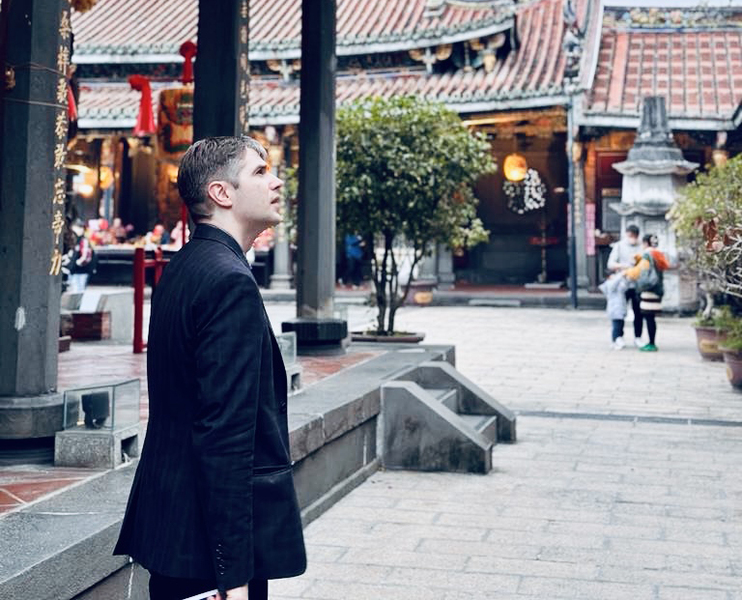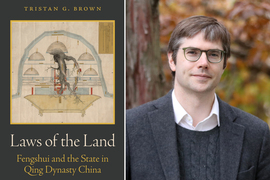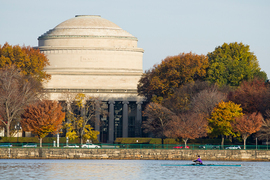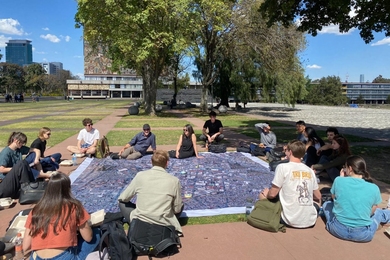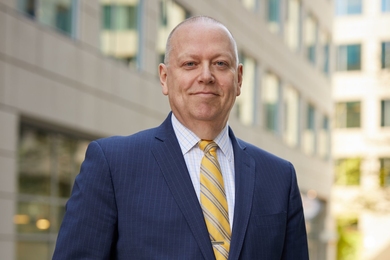Tristan Brown is the S.C. Fang Chinese Language and Culture Career Development Professor at MIT. He specializes in law, science, environment and religion of late imperial China, a period running from the 16th through early 20th centuries.
In this Q&A, Brown discusses how his areas of historical research can be useful for examining today’s pressing environmental challenges. This is part of an ongoing series exploring how the MIT School of Humanities, Arts, and Social Sciences is addressing the climate crisis.
Q: Why does this era of Chinese history resonate so much for you? How is it relevant to contemporary times and challenges?
A: China has always been interesting to historians because it has a long-recorded history, with data showing how people have coped with environmental and climate changes over the centuries. We have tons of records of various kinds of ecological issues, environmental crises, and the associated outbreaks of calamities, famine, epidemics, and warfare. Historians of China have a lot to offer ongoing conversations about climate.
More specifically, I research conflicts over land and resources that erupted when China was undergoing huge environmental, economic, demographic, and political pressures, and the role that feng shui played as local communities and the state tried to mediate those conflicts. [Feng shui is an ancient Chinese practice combining cosmology, spatial aesthetics, and measurement to divine the right balance between the natural and built environment.] Ultimately, the Qing (1644-1912) state was unable to manage these conflicts, and feng shui–based attempts to make decisions about conserving or exploiting certain areas blew up by the end of the 19th century in the face of pressures to industrialize. This is the subject of my first book, “Laws of the Land: Fengshui and the State in Qing Dynasty China.”
Q: Can you give a sense of how feng shui was used to determine outcomes in environmental cases?
A: We tend to think of feng shui as a popular design mechanism today. While this isn’t completely inaccurate, there was much more to it than that in Chinese history, when it evolved over many centuries. Specifically, there are lots of insights in feng shui that reflect the ways in which people recorded the natural world, explained how components in the environment related to one another, and understood why and how bad things happened. There is an interesting concept in feng shui that your environment affects your health,and specifically your children’s (i.e., descendants and progeny) health. That concept is found across premodern feng shui literature and is one of fundamental principles of the whole knowledge system.
During the period I research, the Qing, the primary fuel energy sources in China came from timber and coal. There were legal cases where communities argued against efforts to mine a local mountain, saying that it could injure the feng shui (i.e., undermine the cosmological balance of natural forces and spatial integrity) of a mountain and hurt the fortunes of an entire region. People were suspicious of coal mining in their communities. They had seen or heard about mines collapsing and flooded mine shafts, they had watched runoff ruin good farmland, causing crops to fail, and even perhaps children to fall ill. Coal mining disturbed the human-earth connection, and thus the relationship between people and nature. People invoked feng shui to express an idea that the extraction of rocks and minerals from the land can have detrimental effects on living communities. Whether out of a sincere community-based concern or out of a more self-interested NIMBYism, feng shui was the primary discourse invoked in these cases.
Not all efforts to conserve areas from mining succeeded, especially as foreign imperialism encroached on China, threatening government and local control over the economy. It became gradually clear to China’s elites that the country had to industrialize to survive, and this involved the difficult and even violent process of taking people from farm work and bringing them to cities, building railways, cutting millions of trees, and mining coal to power it all.
Q: This makes it seem as if the Chinese swept away feng shui whenever it presented a hurdle, putting the country on the path to coal dependence, pollution, and a carbon-emitting future.
A: Feng shui has not disappeared in China, but there’s no doubt about it that development in the form of industrialization took precedence in the 20th century, when it became officially labelled a “superstition” on the national stage. When I first went to China in 2007, city air was so polluted I couldn’t see the horizon. I was 18 years old and the air in some northern cities like Shijiazhuang honestly felt scary. I’ve returned many times since then, of course, and there has been great improvement in air quality, because the government made it a priority.
Feng shui is a future-oriented knowledge, concerned with identifying events that have happened in the past that are related to things happening today, and using that information to influence future events. As Richard Smith of Rice University argues, Chinese have used history to order the past, ritual to order the present, and divination to order the future. Consider, for instance, Xiong’an, a new development area outside of Beijing that is physically marking the era of Xi Jinping’s tenure as paramount leader. As soon as the site was selected, people in China started talking about its feng shui, both out of potential environmental concerns and as a subtle form of political commentary. MIT’s own Sol Andrew Stokols in the Department of Urban Studies and Planning (DUSP) has a fantastic new dissertation examining that new area.
In short, the feng shui masters of old said there will be floods and droughts and bad stuff happening in the future if a course correction isn’t made. But at the same time, in feng shui there's never a situation that is hopeless; there is no lost cause. So, there is optimism in the knowledge and rhetoric of feng shui that I think might be applicable as time goes on with climate change. As long as you have a future, you can still change it.
Q: In 2023, you were awarded one of the first grants of MIT’s Climate Nucleus, the faculty committee charged with seeing through the Institute’s climate action plan over the decade. What have you been up to courtesy of this fund?
A: Well, it all started years ago, when I started thinking about great number of mountains in China associated with Buddhism or Daoism that have become national parks in recent decades. Some of these mountains host trees and plant species that are not found in any other part of China. For my grant, I wanted to find out how these mountains have managed to incubate such rare species for the last 2,000 years. And it's not as simple as just saying, well, Buddhism, right? Because there are plenty of Buddhist mountains that have not fared as well ecologically. The religious landscape is part of the answer, but there’s also all the messiness of material history that surrounds such a mountain.
With this grant, I am bringing together a group of scholars of religion, historians, as well as engineers working in conservation ecology, and we’re trying to figure out what makes some of these places religiously and environmentally distinctive. People come to the project with different approaches. My MIT colleague Serguei Saavedra in the Department of Civil and Environmental Engineering uses new models in system ecology to measure the resilience of environments under various stresses. My colleague in religious studies, Or Porath at Tel Aviv University, is asking when and how Asian religions have centered — or ignored — animals and animal welfare. Another collaboration with MIT’s Siqi Zheng in DUSP and Wen-Chi Liao at the National University of Singapore is looking at how we can use artificial intelligence, machine learning, and classical feng shui manuals to teach computers how to analyze the value of a property’s feng shui in Sinophone communities around the world. There’s a lot going on!
Q: How do you bring China’s unique environmental history and law into your classroom, and make it immediate and relevant to the world students face today?
A: History is always part of the answer. I mean, whether it’s for an economist, a political scientist, or an architect, history matters. Likewise, when you’re confronting climate change and all these struggles regarding the environment and various crises involving ecosystems, it’s always a good idea to look at how human beings in the past dealt with similar crises. It doesn’t give you a prediction on what would happen in the future, but it gives you some range of possibilities, many of which may at first appear counterintuitive or surprising.
That’s exactly what the humanities do. My job is to make MIT undergraduates care about a people who are no longer alive, who walked the earth a thousand years ago, who confronted terrible times of conflict and hunger. Sometimes these people left behind a written record about their world, and sometimes they didn’t. But we try to hear them out regardless. I want students to develop empathy for these strangers and wonder what it would be like to walk in their shoes. Every one of those people is someone’s ancestor, and they very well could have been your ancestor.
In my class 21H.186 (Nature and Environment in China), we look at the historical precedents that might be useful for today’s environmental challenges, ranging from urban pollution or domestic recycling systems. The fact we’re still here to ask historical questions is itself significant. When we feel despair about climate change, we can ask, “How did individuals endure the changed course of the Yellow River or the Little Ice Age?” Even when it is recording tragedies, history can be understood as an enduring form of hope.
